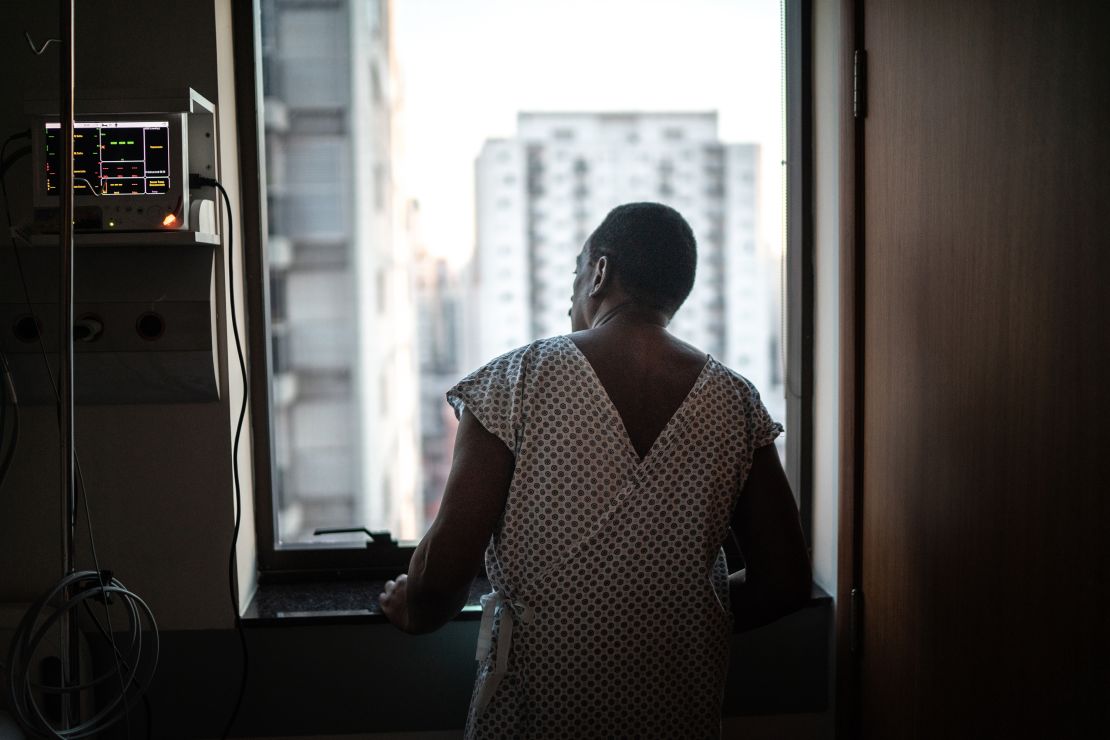This is just used as a distraction from their COMPLETE FAILURE TO GET SURVIVORS 100% RECOVERED!
Recovery statistics here; a complete failure by any measure!
Here's your 100% recovery failure statistics!
tPA full recovery is only 12%
These vascular risks are strongly associated with severe stroke, researchers say
Many risk factors can lead to a stroke, but the magnitude of risk from some of these conditions or behaviors may have a stronger association with severe stroke compared with mild stroke, according to a new study.
Stroke is the third leading cause of death around the world, according to a November 2018 study, causing around 5.5 million deaths annually.
“A stroke occurs when the central nervous system is injured due to a vascular cause, so that could be due to a blockage, which accounts for about 80% of strokes in the United States, or a ruptured blood vessel, which is a hemorrhage, and that’s 20% of strokes in the United States,” said Dr. Steve Messe, professor of neurology at the University of Pennsylvania, who wasn’t involved in the study.
Some risks associated with stroke are hypertension (high blood pressure), atrial fibrillation (an irregular heartbeat) and smoking, according to the US Centers for Disease Control and Prevention.
The study, which published Wednesday in the journal Neurology, revisited data collected between 2007 and 2015 as part of the INTERSTROKE study. Patients were recruited from 142 centers in 32 countries and given standardized questionnaires to measure risk factors, according to the study.
Researchers observed 13,460 patients with stroke and divided the cases based on whether they suffered from a severe or non-severe stroke, which they categorized using a six-point scale that measures a patient’s degree of disability.
“This study looked at the association between modifiable risk factors with severe and mild-moderate stroke. Three risk factors — high blood pressure, smoking and atrial fibrillation (which is an irregular heart rhythm) were linked with higher risk of severe compared to mild-moderate stroke,” said Dr. Catriona Reddin, the first study author, via email. “This emphasises the importance of managing these risk factors, along with other risk factors of stroke.”

Prior research has linked obesity, high blood pressure and elevated cholesterol to strokes, which is consistent with this new study’s findings.
“Our study highlights that some risk factors are particularly important for severe stroke. We hope that hearing the results of our study may emphasise the importance of managing risk factors of stroke,” said Reddin, geriatric medicine specialist registrar at University Hospital Galway and research fellow at University of Galway in Ireland.
Are you at risk of a stroke?
High blood pressure is a risk that most people underestimate, and since 50% of Americans have high blood pressure, it’s an important risk factor to consider, said Dr. Andrew Freeman, director of cardiovascular prevention and wellness at National Jewish Health in Denver, who wasn’t involved in the study. (Freeman is also a medical adviser for WeWard, an activity-tracking app that also incentivizes users to move by letting them accrue points they can redeem for prizes or charity donations. He hasn’t received any financial compensation.)
High blood pressure, also known as hypertension, can result from an unhealthy lifestyle or certain health conditions, such as diabetes or obesity. The condition can also occur during pregnancy.
Hypertension can damage your heart’s tissue and conduction system, leading to atrial fibrillation, or an irregular heartbeat, according to the Cleveland Clinic.
Smoking is strongly associated with cardiovascular disease and can cause the blood to clot and block blood flow to the heart and brain.
“It’s not just tobacco smoke, but marijuana smoke or even really bad air pollution can significantly lead to increased vascular events and risks,” Freeman said.
How to prevent a stroke
Focusing on eating plants, exercising more, stressing less, loving more and sleeping enough can help you lower the risk of stroke, according to Freeman.
Reducing salt in your diet, avoiding high-cholesterol foods, and eating fresh fruits and vegetables can help to lower blood pressure.
Keeping active can also lower blood pressure and help you maintain a healthy weight. In fact, people who are more active have a 25% to 30% lower risk of stroke than the least active people, according to the American Heart Association.
Exercise has also been found to reduce the negative effects of stress, including spikes in blood pressure, by boosting the production of endorphins.
However, if you suspect that you or someone around you is having a stroke, immediately call 911 and get to an ER as soon as possible, Messe said. Stroke treatment is time-sensitive, so it’s important to move quickly.
How to spot signs someone is having a stroke
You can use the acronym FAST to spot the warning signs of a stroke, according to the American Heart Association.
· Face: Smile. Does one side of your face droop?
· Arms: If you raise both arms, does one arm drift down?
· Speech: Are you having difficulty speaking? Is your speech slurred?
· Time: If you see any of these signs, call 911 immediately.
9 comments


No comments:
Post a Comment